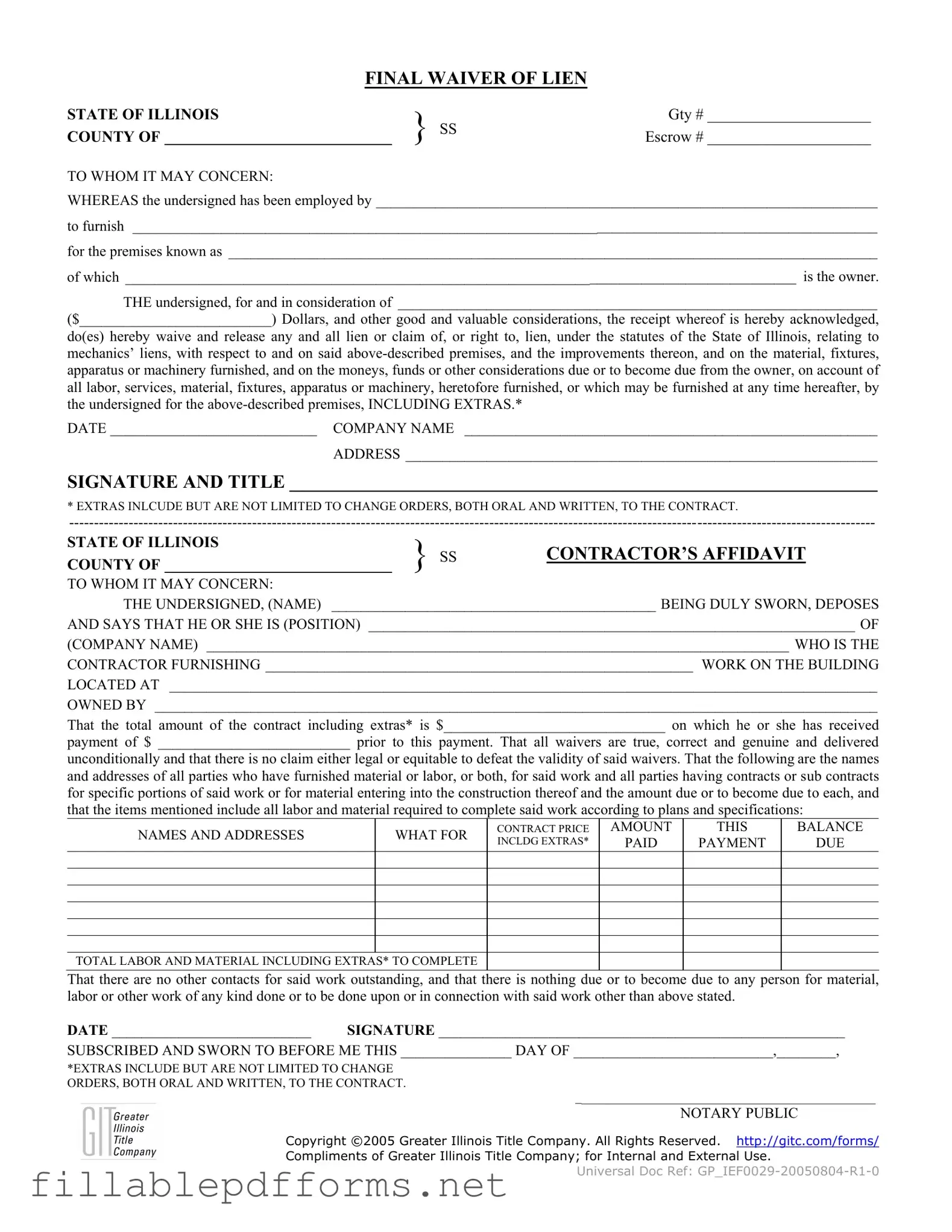Illinois Final Waiver Of Lien PDF Template
The Illinois Final Waiver of Lien form is a crucial document used in the construction industry to protect property owners and contractors alike. This form serves as a formal declaration that a contractor or supplier has received payment for their work and waives any future claims against the property for unpaid services. By completing this form, all parties involved can ensure that there are no lingering financial disputes related to the construction project.
Launch Editor Here
